In the past few years at the Royal Botanic Garden Edinburgh (RBGE) we have experienced changing weather patterns that reflect how climate change will affect Scotland in the future. On Thursday 8th August 2019 an entire tunnel in West Lothian was rendered inaccessible after 60% of rainfall predicted for the entire month of August fell in the space of just three hours. Six of the 10 wettest years in the UK since 1862 have occurred since 1998.
We are now seeing longer periods of dry weather, followed by extremely heavy downpours of rain. These conditions within the garden have made maintaining plant health and flooding issues within the garden a challenge. Heavy rain has brought problems where plant beds, lawn and footpaths are damaged from flooding and water logging. In addition to periods of wet the garden has experienced extreme periods of dry conditions during summer 2018 where extensive irrigation was needed to keep valuable plant collections alive.
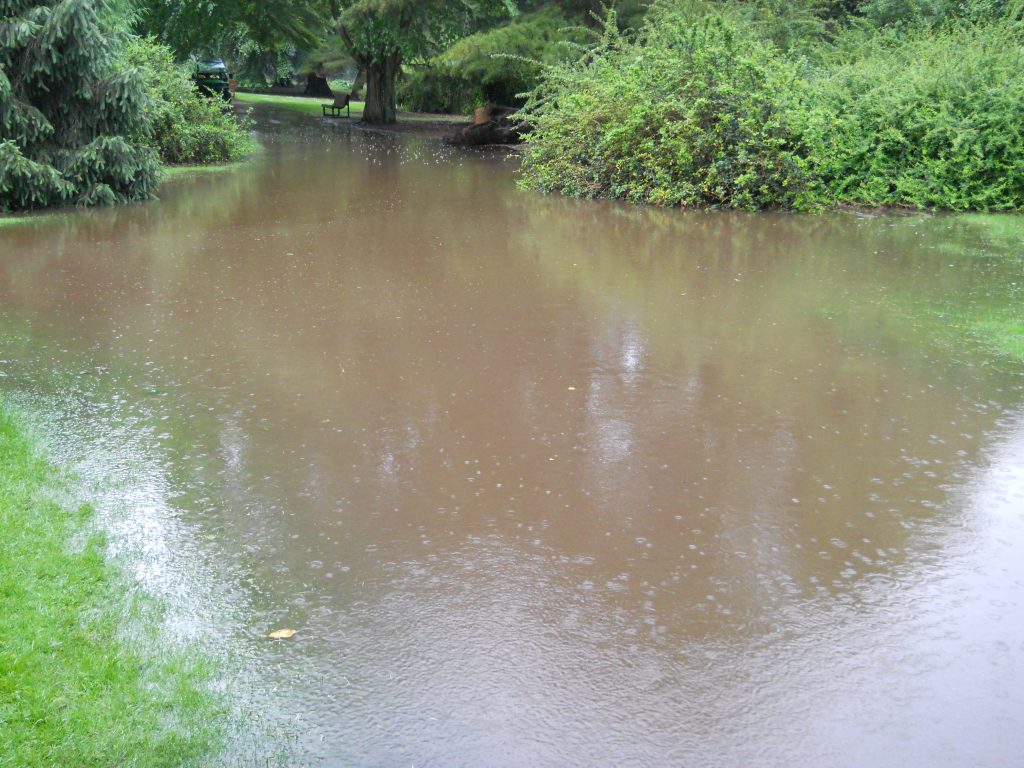
Flooding at The Royal Botanic Garden Edinburgh
Rain Garden Design
In order to better understand our changing climate and to help us cope with these environmental challenges, an experimental Rain Garden (a shallow planted basin) has been designed and curated within an area of the garden that experienced prolonged water logging and flooding. This experimental living study has been in partnership with The Water Academy at Heriot-Watt University Edinburgh. The Rain Garden was planned to be located at the lowest elevation point within the Birch Lawn watershed boundary in order to capture the overland water runoff. The design of this Rain Garden is to intercept the runoff, retain the collected rainwater and then allow it to be infiltrated and absorbed by the planted vegetation. A rain basin was created which involved lowering the ground to create a basin and the soil was re-profiled to improve infiltration rates using gravel and grit.
Rain gardens display a radical change in our thinking and management of rainfall. Rain gardens offer a sustainable solution to use plants as a tool for flood mitigation by mimicking natural rainwater retention and infiltration characteristics, whilst also providing benefits to biodiversity, ecology, greenspace, recreation and educational value.
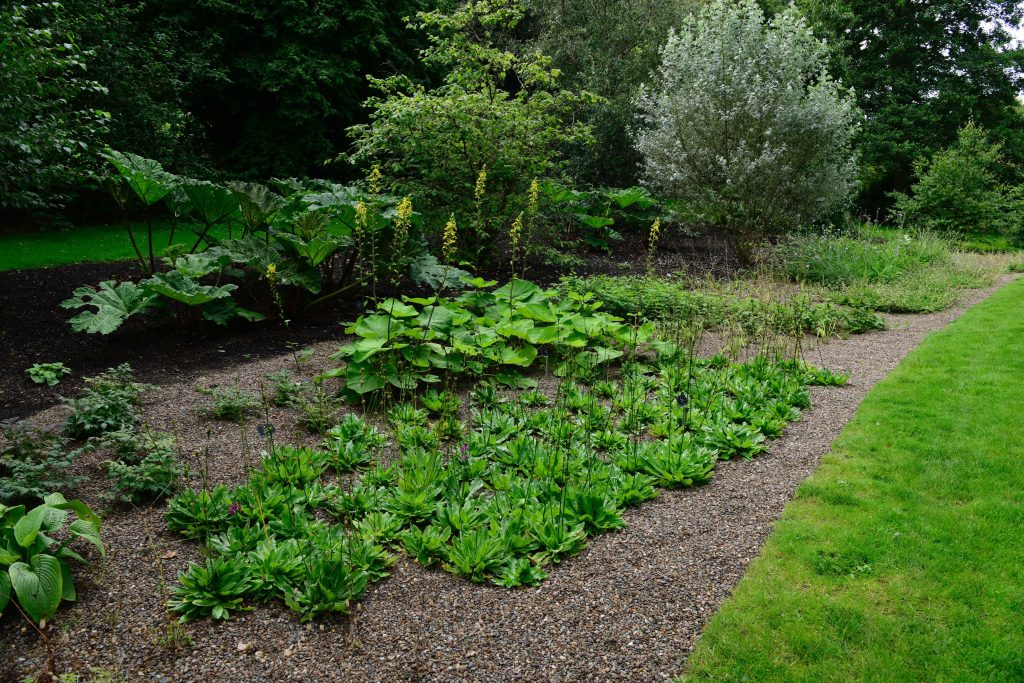
The Rain Garden at The Royal Botanic Garden Edinburgh
Planting Design
It is found that simple mown turf or grass areas will not be of use – generally speaking low monoculture vegetation will not be effective at either soaking up or trapping excess run off. Rain garden creation can be good news for plant lovers – we need to act now by replacing hard surfaces and managed grass areas with mixed naturalistic plants, which will reduce maintenance of the space and increase the wildlife and habitat value of the area as well as the capture of water runoff.
A rain garden is typically composed of flowering herbaceous perennials and grasses and a few shrubs. This shrub and perennial mix is perfect for encouraging and attracting a great diversity of wildlife to the area. The diversity of flowers will provide nectar sources for insects and bees. Leaving stems of the perennials and grasses standing over winter will provide a home for many invertebrates, as well as food for seed eating birds.
Here at RBGE we have used Scottish native and non-native plants in our Rain Garden. Of course there are strong moral and ecological reasons why native plants may be our first choice, but the use of non-natives can be just as effective at doing the same job. This selection of native and non native plants will allow us to monitor and assess how well they cope with occasional temporary flooding and extreme dry spells within the designed space.
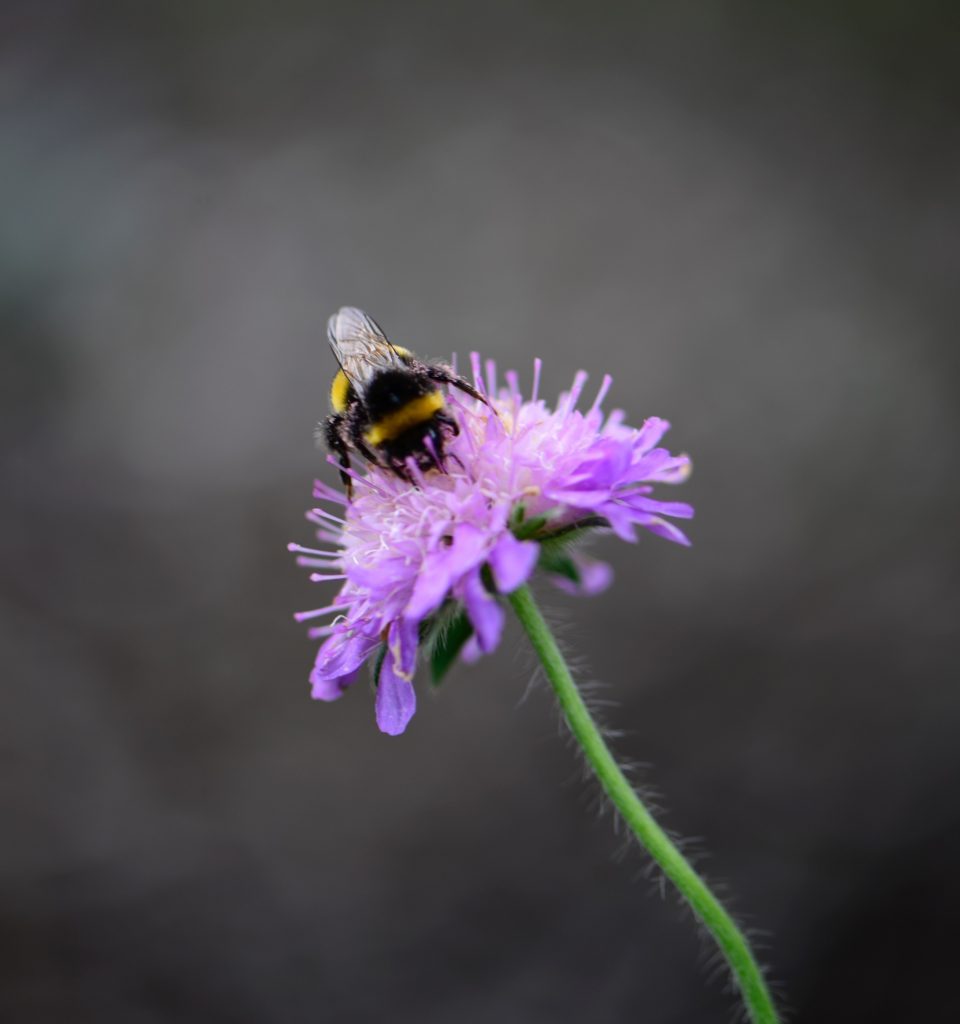
Knautia arvensis (Scottish native)
Maintenance of the Rain Garden
The Rain Garden at RBGE has been designed to be low maintenance and this is the general concept for a rain garden. It should be a designed space that is dominated by plants – no open bare soil. We have used gravel as a mulch to help infiltration and reduce weeds. Weeding is essential in the first few months as plants are becoming established. Once a good vegetation cover has been established, the need for weeding will be reduced. The herbaceous perennials in the planting will be cut back in winter and early spring. Only in exceptionally dry conditions will the area be irrigated. The plants used within the design must be able to cope with periods of extreme wet and extreme dry.
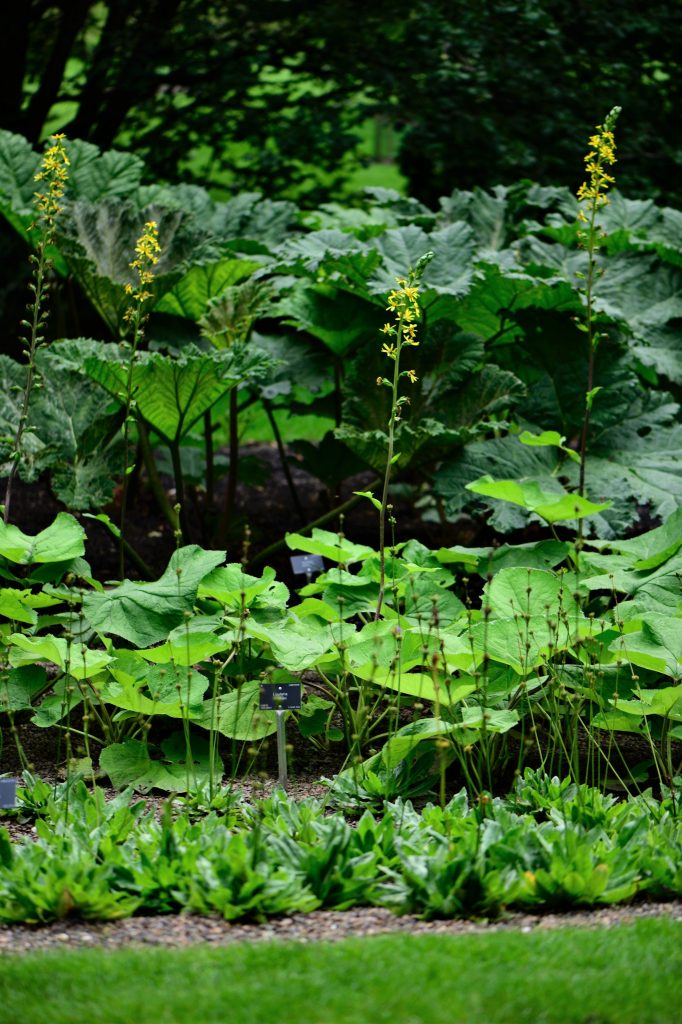
The Rain Garden at the Royal Botanic Garden Edinburgh
The Future
Looking ahead to the future the Rain Garden at RBGE will function as a ‘living laboratory’. This will enable us to learn more about rain garden hydrology and associated plant health, particularly Scottish native plants and their ability to cope with climatic changes. It also acts as a valuable demonstration tool for the public on the use of sustainable flood management techniques. Furthermore it will help with future garden design and management within the botanic garden to help us find solutions on how best to cope with an unpredictable and changing climate.
Plants in the Rain Garden Design
The selected Scottish native plants include: Succisa pratensis, Anthyllis vulneraria, Filipendula ulmaria, Knautia arvensis, Cicerbita alpina and Festuca altissima.
The selected non-native plants include: Aruncus gombalanus (China), Gunnera manicata (Brazil), Ligularia fischeri (E Asia), Aquilegia formosa (Western N America), Primula poissonii (China), Rodgersia pinnata (China) and Hosta sieboldiana (Japan).
A number of established native and non-native trees were already growing at the Birch Lawn, including: A. glutinosa (native), B. pendula (native), C. avelana (native), Quercus robur ‘filicifolia’ (cultivar of a native species), Alnus japonica (Japan), Alnus rubra (N. America), Betula alleghaniensis (NE North America), Betula papyrifera (N North America), B. nigra (USA), Corylus sieboldiana (Japan, Korea), and Populus alba (S and central Europe).
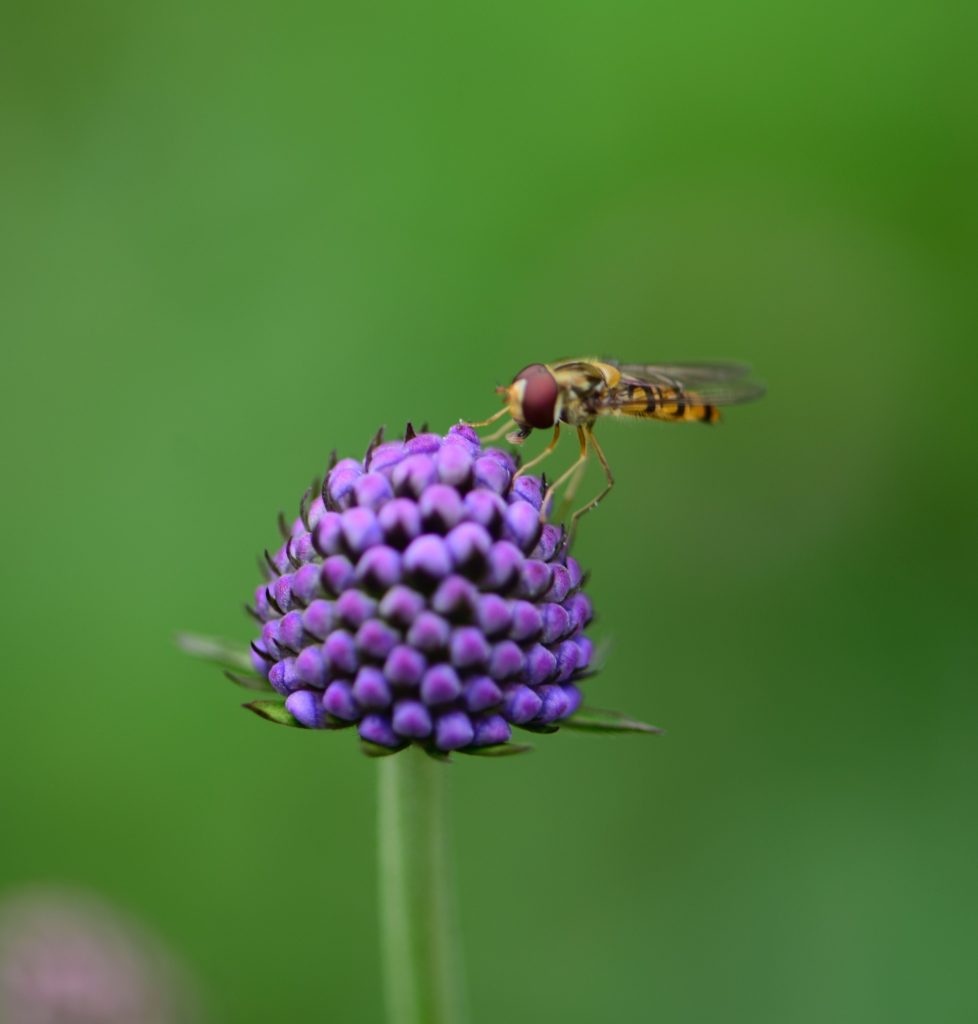
Succisa pratensis (Scottish Native)
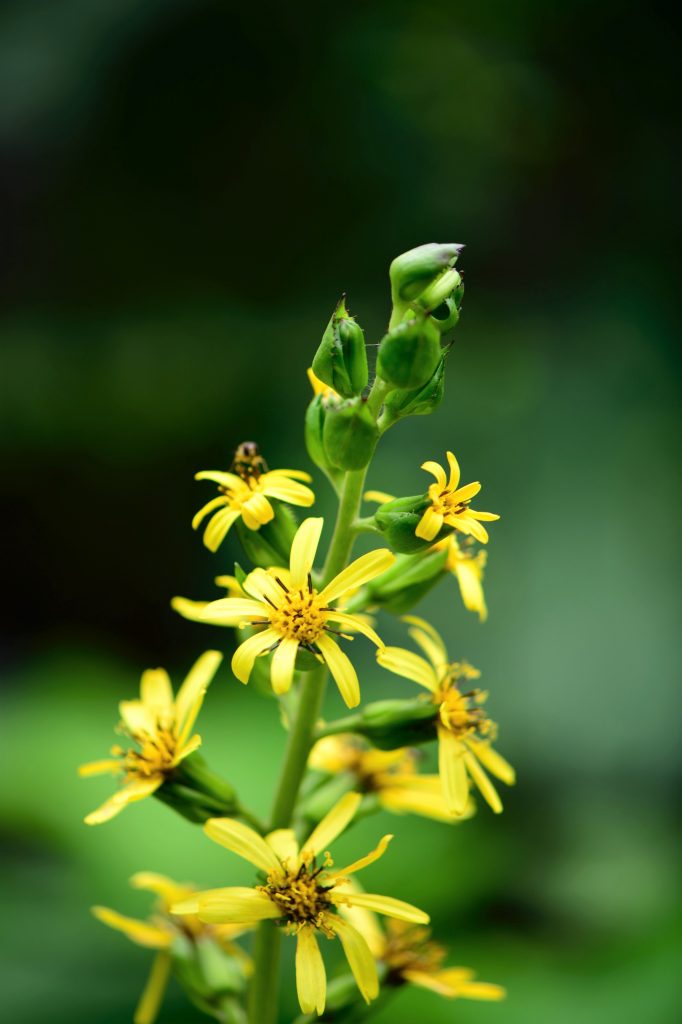
Ligularia fischeri from E.Asia

Duncan McCool
Hi Kirsty,
Very interesting article – I would be interested in hearing more about the design of the soil in the rain garden.